Travel Stories: A Street Art Tour of Woodstock, Cape Town.

Touring the street art of Woodstock, Cape Town
On the way to do a street art tour of Woodstock, a suburb of Cape Town, the taxi driver told me about something he had seen on his way to pick me up from the apartment I was staying in.
"It was in the middle of the street, in front of everybody," he said in a South African accent so thick I had to strain to understand each word. "This man just pushed the woman he was with and then shouted at her. I couldn't hear what he said, but he was angry at her. Real angry. Threatening her."
I expressed my shock, saying something about how it's never pleasant to witness things like that.
"I couldn't understand it," he continued. "Especially now when we have this campaign about violence against women. Have you seen the posters? Heard the adverts on the radio?" His accent was still just as thick, but my ears had started to adjust. Despite what he was telling me, I found it charming. If my first visit to South Africa had achieved anything it was a new fondness for an accent I used to find a little peculiar and impossible to impersonate (though I still find the latter very much the case).
I shook my head again explaining my shock and discomfort at what he had seen.
"They're doing 16 days of campaigning. Telling us that a real man doesn't need to hit a woman. And that we should all stand up against it. But I couldn't do anything, not against this man threatening that woman. I was in my taxi, and the traffic was moving."
It was the driver's turn to shake his head, but he did it in a slower, sadder way, as if he was trying to shake off his regret. After a moment he seemed to re-compose himself and he started to ask me questions about my first impressions of Cape Town, and what I had gotten up to so far.
Little did I know that this outpouring of concern and an instinctive inclination towards community and togetherness was going to become a theme of the day I spent in Woodstock.
Getting to know Woodstock a little better...
After saying goodbye to the taxi driver who went to great efforts to ensure I was at exactly the spot I was supposed to be in order to meet Juma, my guide for a street art tour of Woodstock, I realised I was actually 20 minutes early. I walked into the coffee shop we were meeting in front of called Superette. A bright, light space with tall ceilings and kitted out with a modern canteen feel, I bought a latte and sat on a stool in the front window watching the world go by outside.
It was a busy street, with roadworks happening directly outside. Cape Town's famous wind (which I noticed almost immediately) was whipping up small collections of dust and rubbish off the streets and forcing people to walk in one direction a little firmer, or to put the brakes on in the other. The shops and buildings ranged from dilapidated abandoned spaces and well-worn shops to the much more polished and lovingly rejuvenated warehouse building I was sat in. On several occasions the city's public minivan buses pulled up at the pavement outside and people piled out and in allowing a fellow passenger to leave. There were almost certainly more people sitting on each seat than there should have been. Just like a crowded Tube carriage in London's rush hour. there weren't many smiles, more glazed over expressions.
My guide Juma arrived a few minutes early too, and still with half a full coffee in my hand, I went outside and introduced myself. We got talking immediately and he was happy to share his story. After briefly explaining how he came to South Africa from Zimbabwe a number of years previously, he told me we were going to do a walking tour of a number of works of street art created by artists from all over the world. They'd been invited to Woodstock as part of a community-led initiative that was trying to turn around Woodstock's reputation as a poor, rundown and often feared neighbourhood to an area the Guardian newspaper described as "hipster heaven" thanks to the gentrification of a number of those neglected buildings.
Yes, there was no denying, the airy, newly painted, purposefully-cool-and-creative-looking Woodstock Exchange, which houses Superette and a number of other shops and offices, was an impressive example of the kind of converted warehouse hipsters are drawn to like magnets. And I can't deny how pleasant it was to wonder around the space after the tour, but to go to Woodstock and only see this would have been criminally short-sighted of me, even if the streets Juma led me down did at times feel less clean, less organised and less looked after. They were, however, much more interesting and perhaps more important.

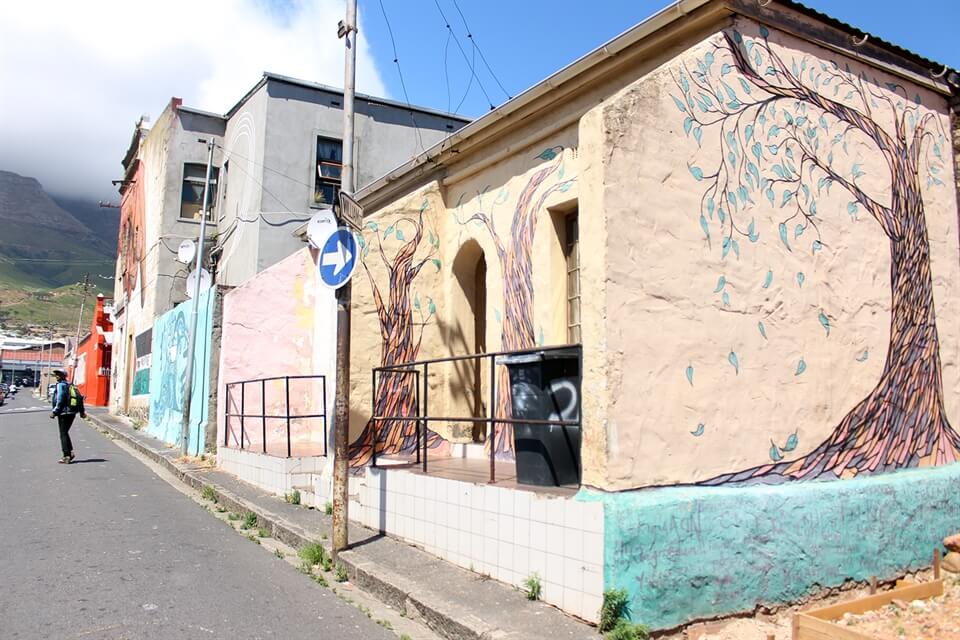

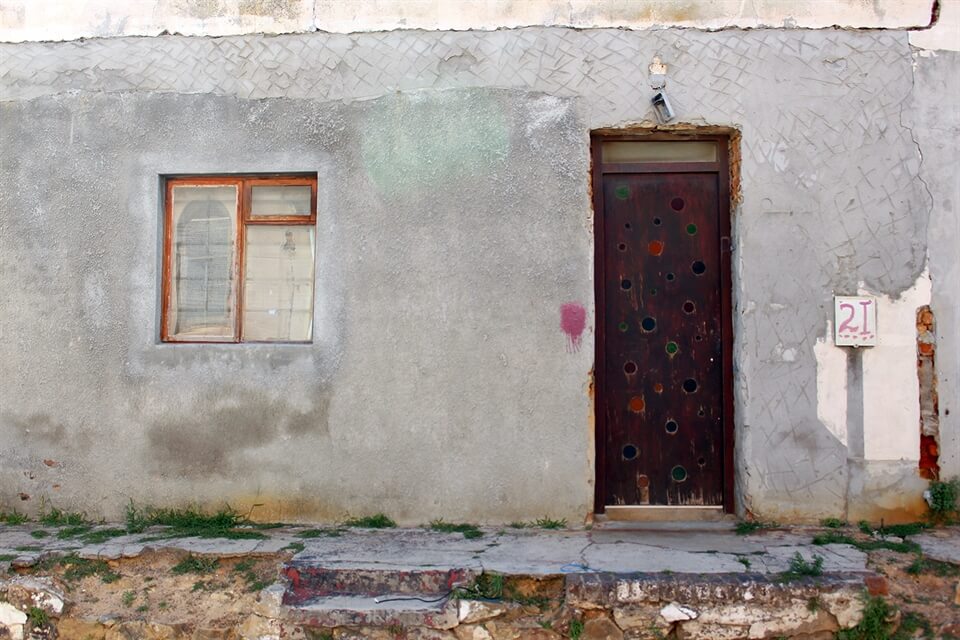

The street art in Woodstock has many messages...
The art began almost immediately, around the corner of the Woodstock Exchange. A number of the first murals I saw were about a number of the endangered species of animal currently under threat in South Africa. Londoner Louis Masai's Blue Crane, Giraffe and Save the Rhino banner were instantly recognisable and immediately thought-provoking and Ukranian artist Interesni Kazki's “Zebra Suit” seemed to have more messages the longer you looked at it.

Each time we stopped, Juma waited patiently for me to take as many photos as I needed which was proving difficult with that now finished coffee cup in my hand. I looked around me for a bin, but instead Juma stepped in and took it from me. He held onto that cup until the end of the tour so I could keep taking photos. Even when I saw a bin or a pile of rubbish on the street, he kept hold of it. I never knew where he did finally get rid of that cup, but I felt almost a burden of gratitude to him for taking it from me with a smile.

My favourite pieces were those commenting in one way or another on the make up of South Africa's rainbow nation. (The tall thin painting in black and white of two plants whose branches intertwine from the roots to the tip. The full circle of many different coloured stripes.) With eleven official languages and hundreds of unofficial dialects and variations, and a cultural make-up that draws on European and Asian, as well as African sources, I have long been fascinated with how this "works" in South Africa, especially when for so long it didn't in a way that was devastating for far too long.


I can't answer that question. It was shamefully naive of me to think I could based on a ten-day visit that had me moving in predominantly white circles. But I believe that if I was going to dig a little deeper and try to understand it a fraction better, Woodstock would be a good place to start. Not least becauseit has maintained its multi-racial, multi-cultural make-up and the community is now motivated in fighting against the gentrification altering the area which has reportedly seen developers from the outside force the evictions of residents who have lived in Woodstock for decades, many of these evictions were also allegedly timed to precede South Africa's 2010 hosting of the World Cup.

Juma led me on a tour of perhaps thirty different works of art, and along the way he told me many stories about why the artists drew, painted, crafted, sculpted, and created what they did. In most of these stories a common theme revealed itself: the people of Woodstock.
Street art to tell the stories of the people of Woodstock
Artists may have arrived from their various corners of the world - Israel, UK, France, Australia, Spain, China among many others - with pre-conceived ideas of what they were going to create, but most were influenced not only by South Africa's people as a whole but also by the individual residents who permitted them to use their walls, their homes as a canvas. On the wall of a porch of one house were the happy faces of two young boys with dark eyes and small smiles - "They're the children who live in that house," Juma told me - and on another wall among a dream-like mural of words and shapes was the face of a young woman looking down at the ground beneath the house.
"That is the woman who has lived in this house all her life," Juma explained. "She still does,"
As he explained this, his mouth never too far from breaking into a smile, a man stood up from where he'd been crouched on the roadside with two others. He approached talking in a language I didn't understand. He had a patchy beard, wore a baseball cap and a winter coat despite a bold sun filling in the gaps in the wind with heat. His face was drawn and thin and if pushed to describe his situation, I would have said "homeless" without little hesitation, though I don't know this to be true at all. This says much more about me than him, I wish to add.
Juma shook hands with the man who continued to talk at speed, animated or maybe upset, though his eyes showed no anger. I smiled at him and at those he'd been sat with. Eventually, their conversation was over and Juma explained that the woman in the painting was his mother. She was now over 90, was frail and was being threatened with eviction from her home. The reasons why weren't explained to me why, but I knew enough from the man's tone to know it was something of an outrage for him.

There was also another man, who came up to us and started talking at great lengths. In fact, during our conversation there were more than a few occasions when I wondered if he was going to ever stop. He asked me about my camera and if I was any good at photography. I said I was a passionate amateur and probably always would be. He asked me if I knew where he could get photos printed nearby. I didn't. I'm sorry, I'm not from here, I replied. He asked me where I was from and I answered, London. I think he had some stories about London but I can't remember if they were from his own visit or from things he had heard. At one point he explained that he suffered from mental health problems. That he needed to exercise to keep healthy and I nodded, and told him I do the same. Juma was smiling at us both, still holding my paper coffee cup in his hand.
Just as the man was about to leave he asked me my name. I told him and he extended a hand saying "John."
"That's my father's name," I said instinctively.
And that began another conversation. He explained that his father was white, his mother was black and he had been born and raised a Muslim, but now was a born again Christian. He asked where I lived and I told him Amsterdam. His grandfather had been Dutch, he told me. He had a Dutch version of the Bible that used to belong to his grandfather. He could read it and understand it mostly. He talked about a grandfather fighting in the Boer War but it wasn't clear if it was the same one and I don't know on which side. I remember he had chestnut brown eyes that sparkled a little, lighter than the skin surrounding them. Finally he moved on but not after writing down the name of my blog in a notebook that was full of similar scribbles of just a few words or numbers.
"Woodstock is full of people like that," Juma said to me. "People who just want to talk."
Even though this was quite early on in the tour, I didn't doubt him for a second. Talking to Woodstock's residents was strangely addictive, in the same way I quickly became accustomed to looking for new murals or artwork to admire and photograph.


I've written a lot, I know, though I have more to say.
Street art shaping the future of Woodstock?
I haven't told you about why Juma and I joked half-seriously about how in ten years time Woodstock could be home to some of the world's most famous artists thanks to the paintings they have grown up surrounded by. Nor have I told you more of the individual stories that accompany the artists, like Chinese artist DALeast who has now made Cape Town his home.
And I really should tell you about Gympie Street, a once notorious part of Woodstock famed for gangland clashes and for being one of the most dangerous streets in the world (apparently), which has by all accounts completely changed. As we stood on one corner of Gympie Street, Juma pointed out that the street sign was missing "acquired" by somebody and now on display in a German art gallery, the name famous enough to those in the know about notorious street crime locations. Just as we were moving on a white man with curled hair and dressed in a shirt and tie walked past us. "Come to my restaurant! It's at the top of Gympie Street," he called out to me grinning and pointing up the hill. "Good food, good conversation!" It wasn't the kind of welcome you'd expect from a cafe on a street one should avoid at all costs.


But I really have to stop now. Not because I want to or because I'm all out of thoughts and wonderings about Woodstock or its street art. I have to stop now because sometimes too many words are just that... too many words. Instead, maybe it's best to let something else do the talking, like the street art I saw.
Or maybe, I should let somebody else do the talking. Because Woodstock, and the world, is full of them; people who just want to talk.
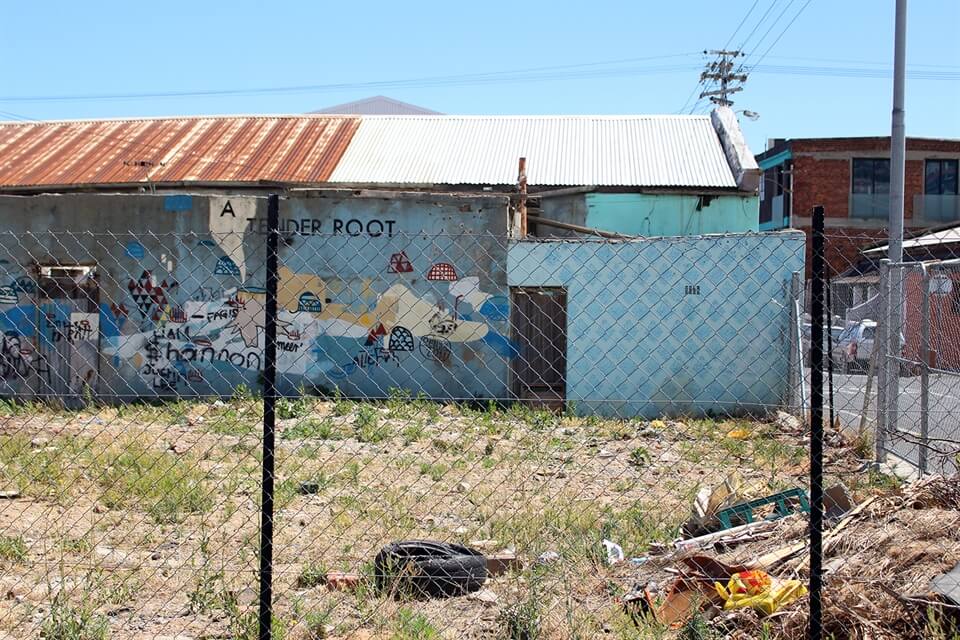





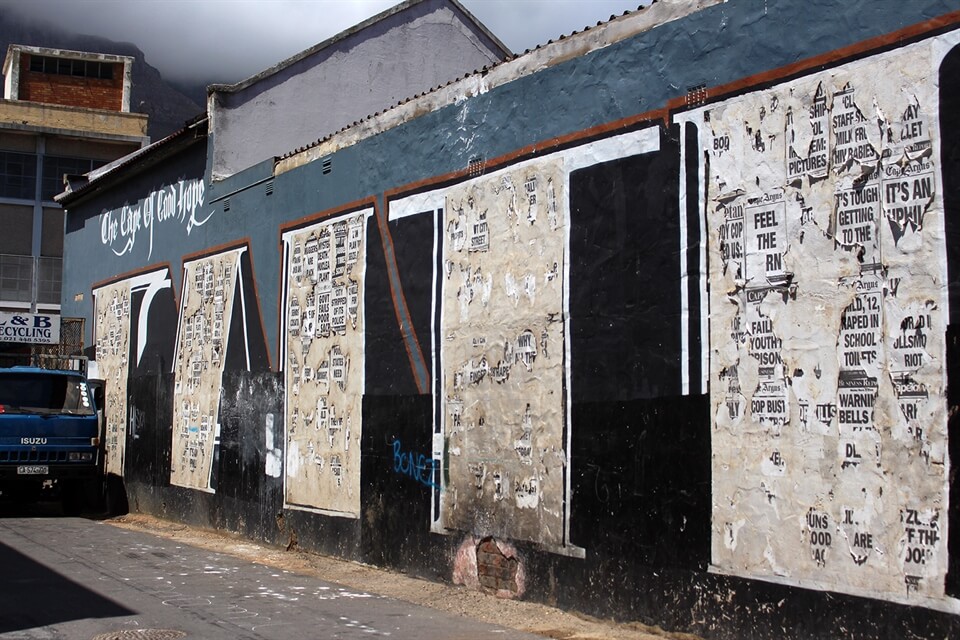








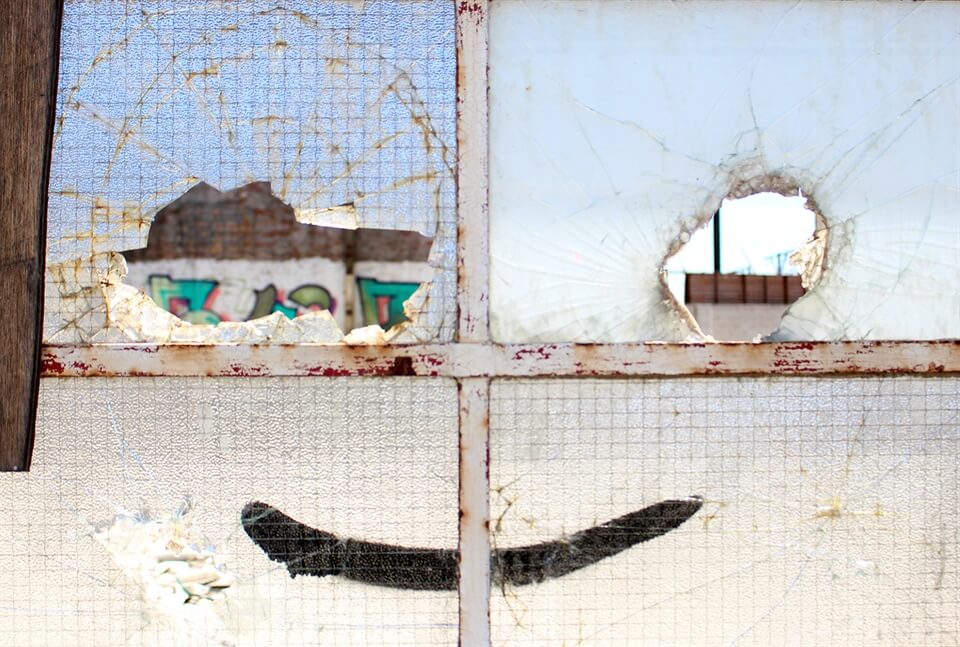
I hope the photos of the artwork tell the stories I've neglected to tell. Of course, they're stories you can hear for yourself too if you find yourself in Cape Town with a spare few hours. You should email Juma on juma.mkwela@gmail.com or go to his website to book your tour.
If you'd like to save or share this post, here's an image you can pin:
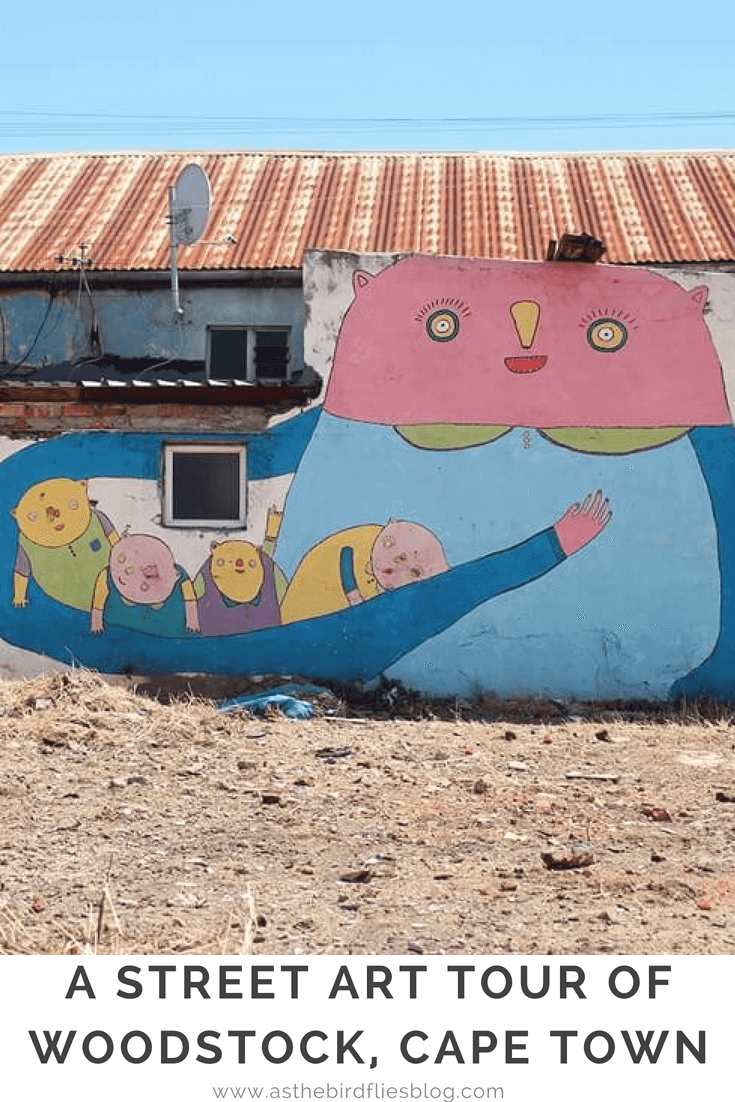

Frances M. Thompson
Find Frankie on Facebook, Twitter, Instagram, Pinterest, and Google+.
 Family Travel: How to Travel with Kids - My Golden Rules
Family Travel: How to Travel with Kids - My Golden Rules_x300.jpg?v=1) Amsterdam Travel: Best Luxury Hotels in Amsterdam - Reviewed!
Amsterdam Travel: Best Luxury Hotels in Amsterdam - Reviewed! Solo Luxury Travel: Best Caribbean Islands for Solo Travellers
Solo Luxury Travel: Best Caribbean Islands for Solo Travellers New Zealand Travel: 51 Interesting Facts About New Zealand Aotearoa
New Zealand Travel: 51 Interesting Facts About New Zealand Aotearoa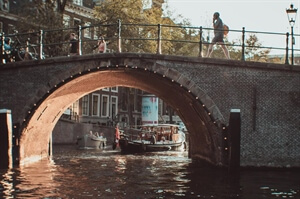 Amsterdam Travel: Accessible Travel Guide for Amsterdam
Amsterdam Travel: Accessible Travel Guide for Amsterdam About the Blog & Frankie
About the Blog & Frankie Welcome to My Amsterdam Travel Blog!
Welcome to My Amsterdam Travel Blog! Welcome to My Luxury Family Travel Blog!
Welcome to My Luxury Family Travel Blog! Welcome to My Writing Blog!
Welcome to My Writing Blog! Lover Mother Other: Poems - Out Now!
Lover Mother Other: Poems - Out Now! I Write Stories That Move You
I Write Stories That Move You Order WriteNOW Cards - Affirmation Cards for Writers
Order WriteNOW Cards - Affirmation Cards for Writers Work With Me
Work With Me